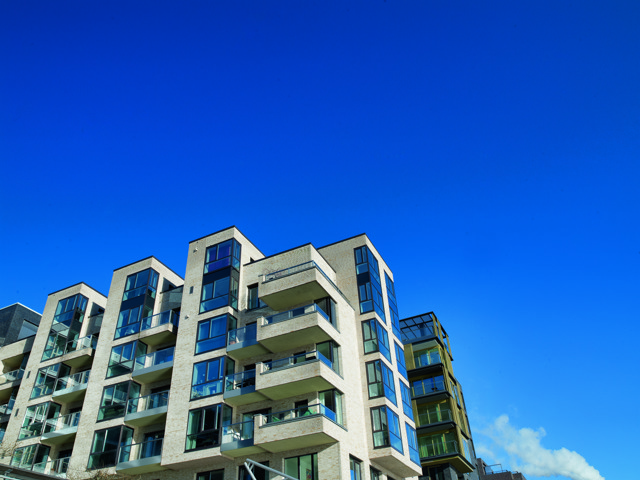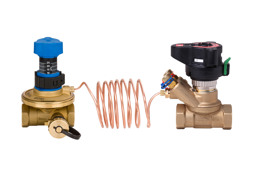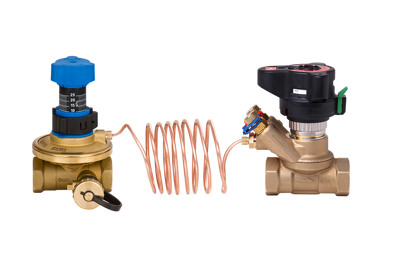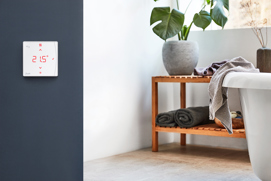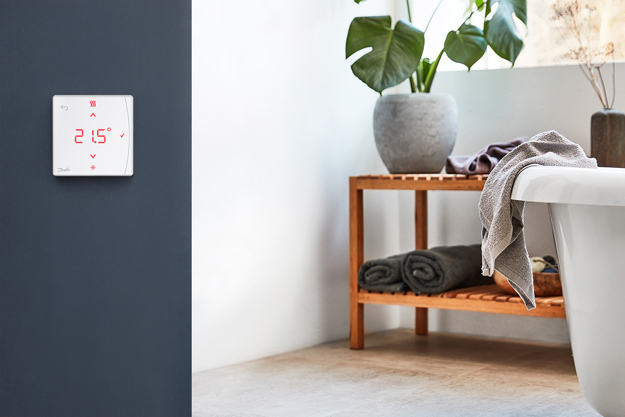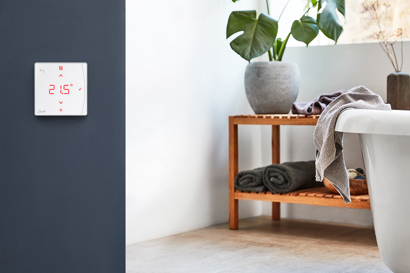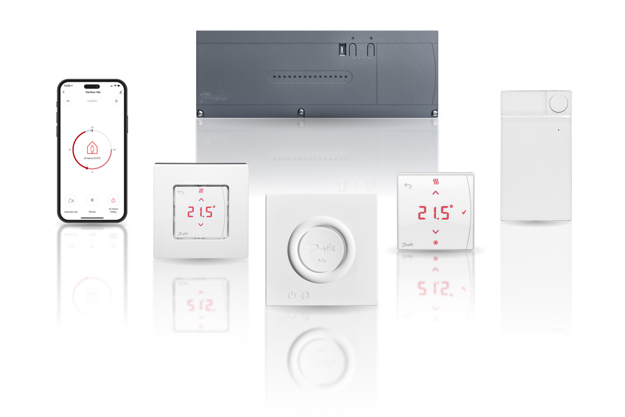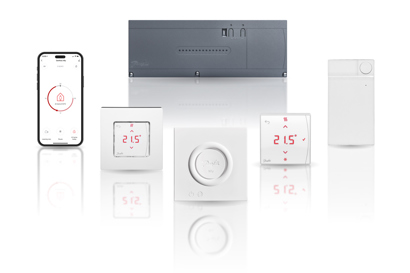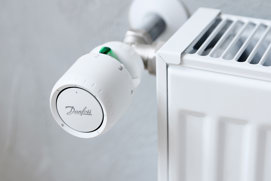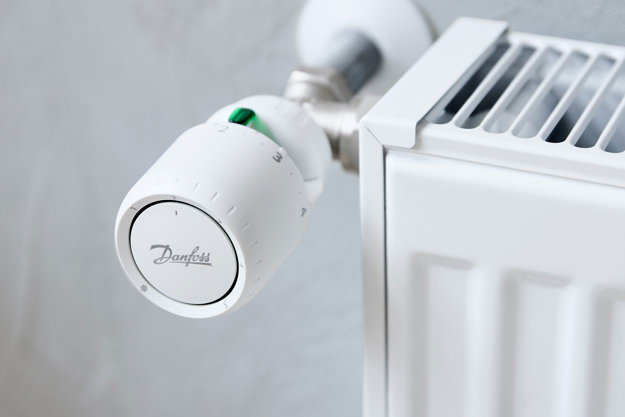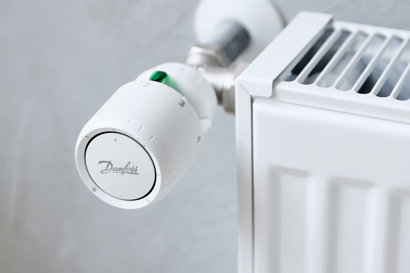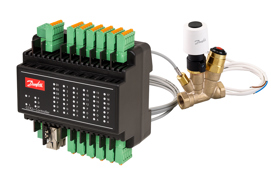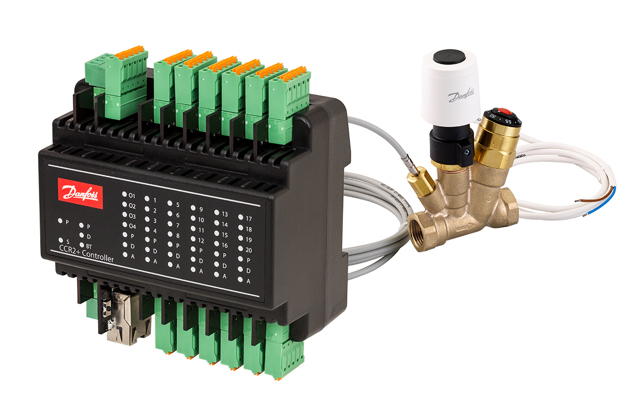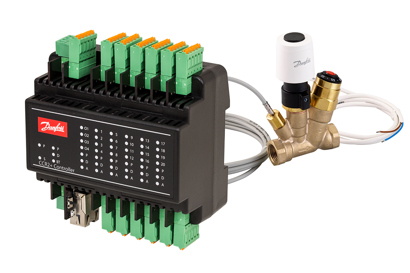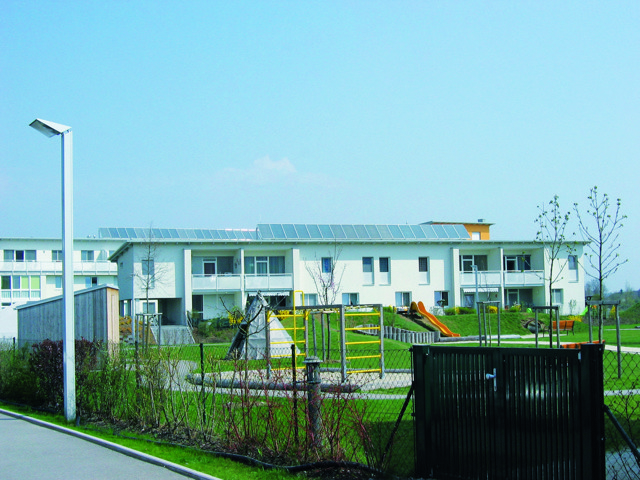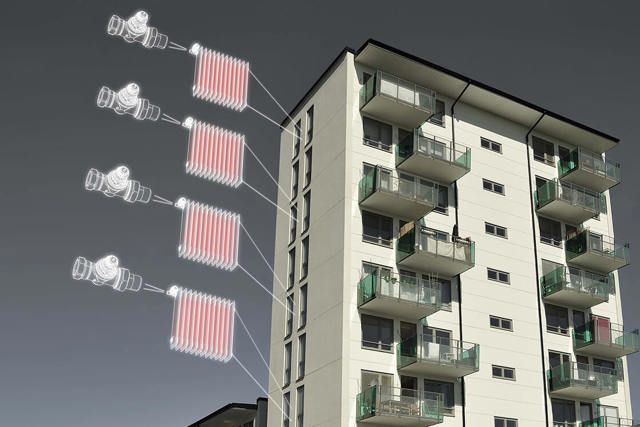What is dynamic hydronic balancing?
In contrast to static balancing, the partial load case is also considered in the dynamic balancing variant. Using dynamic balancing valves or pressure independent thermostatic valves, the differential pressure on the radiator or in the line can be kept constant throughout the building under all load conditions with this balancing solution. The mass flows are correctly maintained even under partial load or changing load conditions – hence the name dynamic balancing.
Related products
-
if (isSmallPicture) {


 Differential pressure control valves
Differential pressure control valvesDifferential pressure control valves provide a dynamic balancing solution for HVAC applications. The valves eliminate pressure fluctuations occurring in variable flow systems, such as two-pipe radiator systems, at partial load conditions. These types of valves can also be used in floor heating and comfort cooling applications.
-
if (isSmallPicture) {


 Danfoss Icon2™
Danfoss Icon2™Advanced floor heating control for hydronic floor heating, designed for fast installation and to complement the interior. All underfloor heating products can be changed to Danfoss Icon2™ with all the new functions that modern underfloor heating control can offer.
-
if (isSmallPicture) {


 Danfoss Icon™ support
Danfoss Icon™ supportClick here to find documentation, software info, installation videos and guides.
-
if (isSmallPicture) {


 Radiator thermostats overview
Radiator thermostats overviewDanfoss radiator thermostats maintain constant desired room temperatures, individually room by room and help to reduce energy consumption. Mechanical thermostats or smartphone controlled thermostats - find them all here.
-
if (isSmallPicture) {


 MTCV with CCR2+
MTCV with CCR2+MTCV Thermal balancing valves provide a dynamic, temperature based, balancing solution for drinking water applications. Combined with the CCR2+ a smart and energy-efficient electronic control solution for monitoring and disinfecting DHW systems is established.
Read more about other types of hydronic balancing

How to increase the energy efficiency of heating systems
With switching from natural gas to district heating or heat pump there are some aspects that you should always take into consideration.

